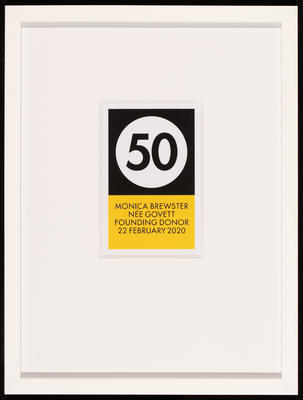Alterations: The Given as an Art Political Statement
-
Billy Apple
b.1935
d.2021
Title
Alterations: The Given as an Art Political Statement
Details
| Production Date | 1980 |
|---|---|
| Collection(s) | Collection Govett-Brewster Art Gallery, New Plymouth. Purchased from the Monica Brewster Bequest in 1979. |
| Accession Number | 79/41/1 |
| Media | wood, metal, carpet, acrylic paint. |
About
Billy Apple is well known for the freshness and conceptual rigour of his artworks, but also for his often caustic analyses of the operations of the art industry. Apple returned to New Zealand from New York in 1979 and produced a series of works which sought to literally transform the local art landscape. The Given as an Art-Political Statement was a series of carefully considered recommendations for alterations to the architecture of New Zealand art galleries. Dick Bett had become the new director of the Govett-Brewster Art Gallery only weeks before Apple’s project was initiated. It seemed a perfect time to undertake a critical analysis of the gallery space and Bett welcomed Apple’s input as his first art acquisition as director. Significant changes were made at the Govett-Brewster, the only gallery to permanently adopt Apple’s recommended changes. Most notably the staircase between levels B and C was widened to correspond to the sightlines from the entrance on level A, and the balustrades were also altered according to the artist’s instructions.
For an artist invited to exhibit, the architecture of the gallery space, the expectations of regular gallery-goers and the gallery’s behind-the-scenes machinations of staffing and procedures all comprise a ‘given’ within which he or she must operate. This given context will invariably impact on the meaning of the artwork. Whether art is displayed in a pristine white gallery, a run-down warehouse or a public park, the setting becomes a filter which inflects on the meaning and reception of the work.
Apple’s Alterations transform context into content. They turn the tables on the museum by declaring that the artwork will leave its own lasting physical trace. By focusing on points of access and sightlines within the gallery environment, Apple subtly highlights its spatial politics, drawing attention to often overlooked aspects of the art viewing experience.


